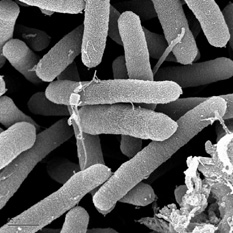Pseudomonas syringae: The Pathogen and Epiphyte: Difference between revisions
| Line 47: | Line 47: | ||
==References== | ==References== | ||
<references /> | <references /> | ||
<ref name=Hirano>[https://www.annualreviews.org/doi/pdf/10.1146/annurev.py.28.090190.001103]</ref> | <ref name=Hirano>[https://www.annualreviews.org/doi/pdf/10.1146/annurev.py.28.090190.001103]</ref><br> | ||
<ref name=pic>[http://genome.jgi-psf.org/psesy/psesy.home.html]</ref> | |||
<br><br>Authored for BIOL 238 Microbiology, taught by [mailto:slonczewski@kenyon.edu Joan Slonczewski], 2021, [http://www.kenyon.edu/index.xml Kenyon College]. | <br><br>Authored for BIOL 238 Microbiology, taught by [mailto:slonczewski@kenyon.edu Joan Slonczewski], 2021, [http://www.kenyon.edu/index.xml Kenyon College]. | ||
<br> | <br> | ||
Revision as of 19:45, 5 April 2021
Introduction

At right is a sample image insertion. It works for any image uploaded anywhere to MicrobeWiki.
The insertion code consists of:
Double brackets: [[
Filename: PHIL_1181_lores.jpg
Thumbnail status: |thumb|
Pixel size: |300px|
Placement on page: |right|
Legend/credit: Electron micrograph of the Ebola Zaire virus. This was the first photo ever taken of the virus, on 10/13/1976. By Dr. F.A. Murphy, now at U.C. Davis, then at the CDC. Every image requires a link to the source.
Closed double brackets: ]]
Other examples:
Bold
Italic
Subscript: H2O
Superscript: Fe3+
Pseudomonas syringae is responsible for various functions within the microbial community and plays a diverse role in the biology of the phyllo-sphere as a pathogen, epiphyte, and ice nucleus (1). The original strain was isolated in 1902, by van Hall, via diseased lilacs (Syringa vulgaris), directly corresponding to the species designation, syringae. By the early 1970s, nearly 40 stains of the phytopathogenic bacteria were isolated form varying plant species lesions and host specificity became an important criterion used by plant pathologist to differentiate variable species (1). Overall,P. syringae is characterized as an aerobic, Gram-negative, rod-shaped bacterium with polar flagella (1). They do not accumulate poly-B-hydroxybutyrate, but do produce diffusible fluorescent pigments and associate as arginine dihydrolase and oxidase negative (1). Additionally, with many variable strains, Phytobacteriologist have created a system for distinguishing between these bacteria via a species designation “pathovar” (pv.) (1). Also, as a plant-based pathogen known for its epiphytic abilities, P. syringae is also incredibly active in ice-nucleation. (3) With such a wide set of biological interactions and significant contributions to biological systems, understanding the molecular basis of P. syringae is critical and has resulted in P. syringae acting as a model for the study of host-pathogen interactions in various experimental hypotheses. (1) In addition, the abundance of P. syringae in rain, snow, and wild plants has been closely reported and corresponds with studies looking into P. syringae in relation to biochemical traits, pathogenicity and pathogenicity-related factors. (3) In all, P. syringae is an archetype of plant pathogens, an ubiquitous epiphyte with well-studied ecology, whose mechanisms of pathogenicity and evolution have been rigorously investigated (3). With the majority of scientific investigations relating to this bacterium focused on its roles as a plant pathogen, the emergence of P. syringae and ice nucleation (IN) activity is also of critical importance (3). With direct relation to processes in which the role of freezing is critical, investigations have led to the idea of P. syringae having an elaborate history whereby it survives and proliferates in diverse niches in habitats linked to the water cycle (3). Therefore, the complex role of P. syringae within the microbial world can hold significant impacts on various environmental processes and biological systems.
Sample citations: [1]
[2]
A citation code consists of a hyperlinked reference within "ref" begin and end codes.
To repeat the citation for other statements, the reference needs to have a names: "Cite error: Closing </ref> missing for <ref> tag
Section 1
Include some current research, with at least one figure showing data.
Every point of information REQUIRES CITATION using the citation tool shown above.
Section 2
Include some current research, with at least one figure showing data.
Section 3
Include some current research, with at least one figure showing data.
Section 4
Conclusion
References
[1]
[2]
Authored for BIOL 238 Microbiology, taught by Joan Slonczewski, 2021, Kenyon College.
